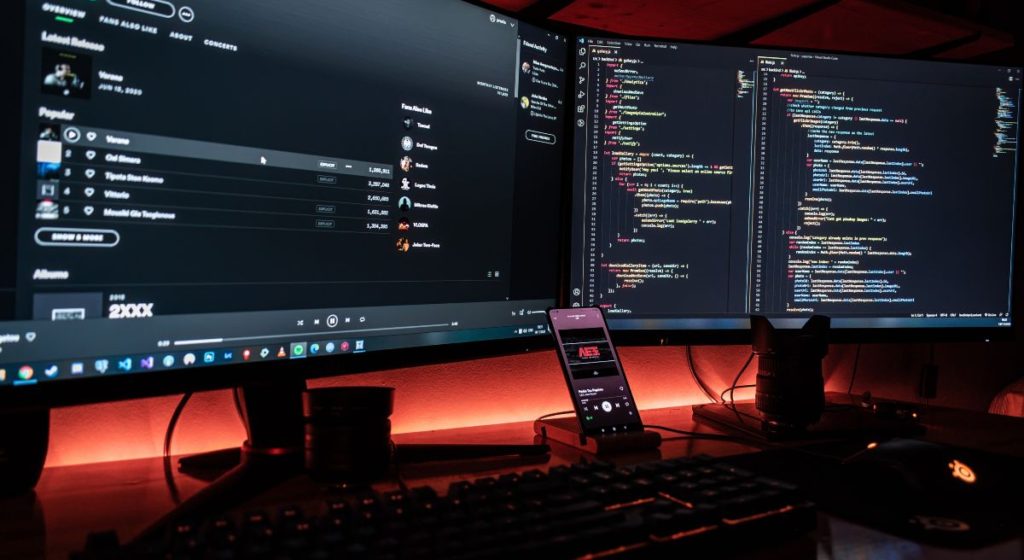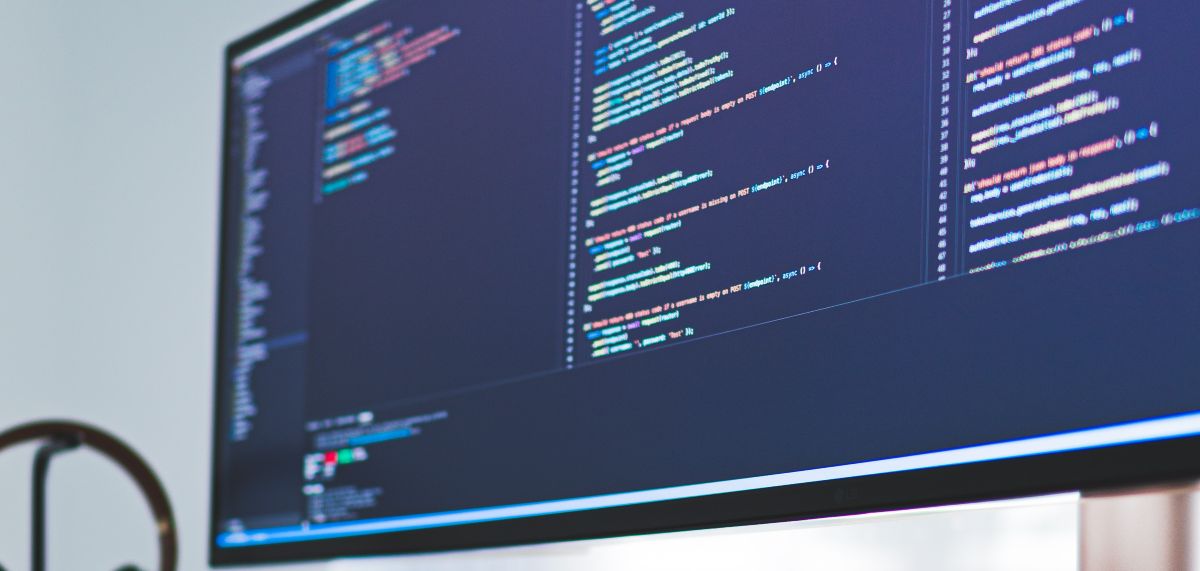If you’re a programmer, coder, or web developer, then you know the importance of having a large screen. Judging by the fact you clicked on this article you are also likely well aware that ultrawide monitors are becoming more and more popular. But is an ultrawide monitor actually good for programming? Is it worth the upgrade? Or should you get dual monitors instead?
In this article, we’ll discuss the pros and cons of using an ultrawide monitor for coding and development work. By the end of this article, you should have a good idea of whether an ultrawide monitor is right for your coding needs.
So, let’s get started!
Is An Ultrawide Monitor Good For Programming?

The most obvious advantage of an ultrawide monitor is the sheer amount of screen real-estate that it offers. If you’re used to working on a laptop or a smaller monitor, then an ultrawide monitor will feel like a revelation.
Having all that extra space can be great for programming because it allows you to have multiple windows open side-by-side. Perfect for viewing your IDE and running code on separate screens. Or more likely, at least for me, having your code on one side and StackOverflow on the other.
It’s hard to find a reason to caution against an ultrawide monitor for coding. Curved monitors are great! They look better than 16:9 monitors, they offer more screen real-estate, and they offer an all-around more pleasant experience. The only potential downside is the price tag. Ultrawide monitors are still a relatively new technology compared to the trusty 16:9 screen and as such, they come with a premium price tag.
So, if you’re looking for the best monitor for programming and can afford it, then a curved ultrawide monitor desk setup is a great way to go. You most certainly won’t be disappointed by an ultrawide monitor while coding. But, you can’t ignore the option of using multiple monitors instead. They offer a similar boost in screen space, usually at a lower price. I’ll compare these setups in a bit more detail now.
Ultrawide Display vs Dual Monitor Setup For A Programmer

Ultrawide monitors have an army of loyal fans that would be angered by my even inferring multiple monitors are even comparable to an ultrawide display. Despite this, you can’t ignore the fact that multiple monitor setups are still a very popular option, especially for programmers. So, which is better?
Price
The most obvious advantage that dual monitors have over ultrawides is the price tag. If you’re looking to upgrade your monitor setup on a budget then dual monitors are going to be a more attractive option. You can get two good quality 1080p monitors for the price of a single ultrawide. You will get more screen space for your money with a dual monitor setup.
Specs
However, ultrawide monitors often have a higher QHD or 5k2k resolution, as well as almost always having a high refresh rate. Of course, you can find both 16:9 standard and 21:9 ultrawide monitors with a wide range of specs. But, in general, if you have a fixed budget and a choice between getting two monitors and 1 ultrawide monitor with your money, the ultrawide monitor will have a better resolution , color depth, and refresh rate than the two 16:9 monitors you could get for the same price.
Flexibility
Dual monitors also offer more flexibility in terms of monitor positioning. You can position them however you want, side-by-side, stacked on top of each other, or at different angles. This is great if you have a specific way that you like to work or if you are looking to experiment with using a vertical monitor. Plus it’s easy to add, move and adjust monitors to make a triple monitor setup, or whatever else you fancy. Ultrawide monitors are much more limited in this regard since they are one long, curved screen that takes up lots of your desk width.
It is also easier to snap windows on a regular-sized monitor. This might not seem too important but if you are intending for your code to be run on a standard monitor by users, it’s probably more helpful that you run your testing also on standard screen size. That said, if you use Linux there are some great tiling window managers that flawlessly coordinate your windows on an ultrawide monitor, I can personally vouch for i3.
Overall
So, which is better for programming? It honestly depends on what you value most. It comes down to personal preference.
Neither will hold back your programming. In fact, both will aid you drastically if you are used to using a single monitor.
If you want the best possible image quality and screen space, then an ultrawide monitor is the way to go. But, if you’re looking for a cheaper option that still offers plenty of screen space and flexibility then dual monitors are worth considering.
Is It Worth Upgrading To An Ultrawide Monitor For Coding?


So you’ve got a single 16:9 monitor and wondering if an upgrade to an ultrawide monitor will help elevate your coding workspace. Here’s what you need to know.
The short answer is yes, an ultrawide monitor is great for programming. The main reason being the amount of screen real-estate that you get with ultrawide monitors. It can be a game-changer compared to what you are currently using.
With an ultrawide monitor, you can have multiple windows side-by-side without any overlap. This is fantastic for programming as you can easily reference different parts of your code or have your IDE and browser open at the same time. No more toggling between tabs!
Need I go on? This question is far easier than answering if you should get a multiple monitor setup or an ultrawide monitor. If you have the financial means, upgrading to an ultrawide monitor will help you see a drastic improvement in how you work. More programming, less toggling between tabs.
Here’s a nice quote, I can’t quite remember where I heard it but someone told me
‘The only problem with ultrawide monitors is that you’ll never want to go back to a regular sized monitor’
I couldn’t agree more. But if you are still not convinced. Maybe you’ll listen to someone else. Here’s a great video I found a couple of months ago that actually convinced me take ultrawide monitors a bit more seriously.
Hopefully, I’ve addressed some of your concerns about getting an ultrawide monitor. If you still have any questions don’t hesitate to let me know and I’ll try and give you a prompt answer.







